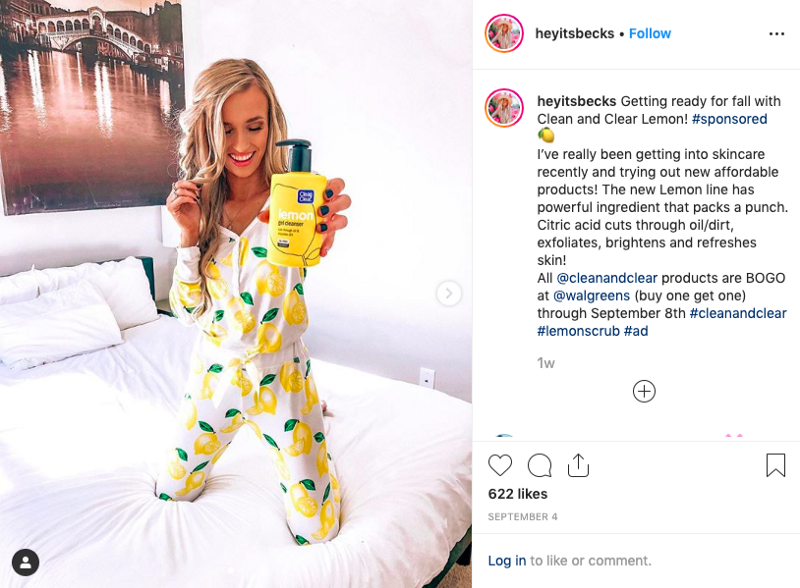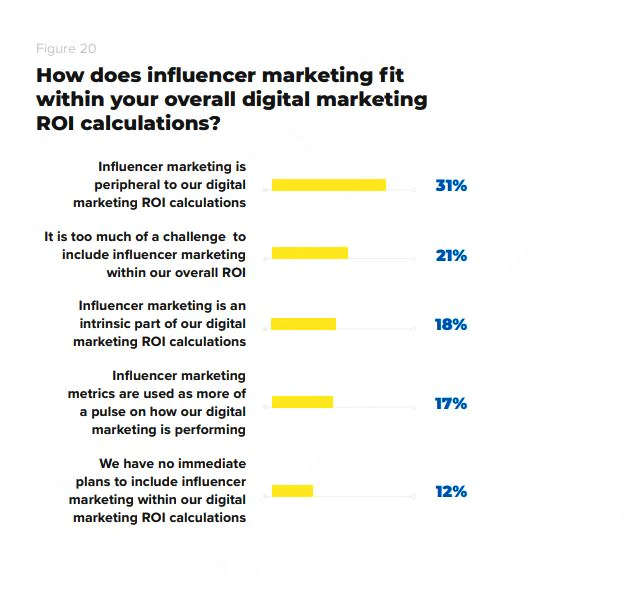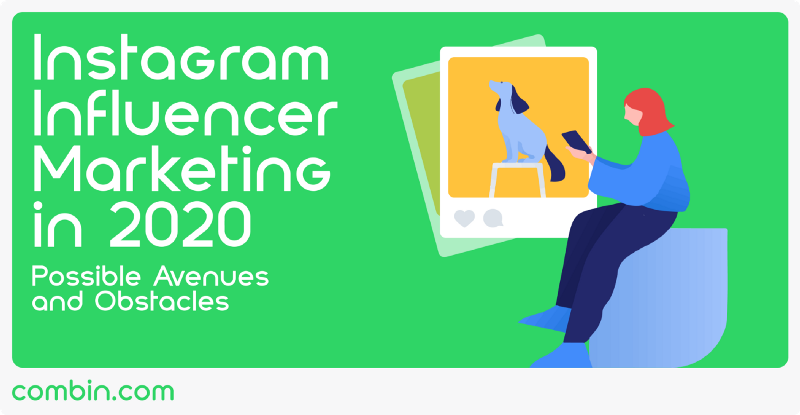Influencer marketing has been developing at the speed of light in recent years.
In 2018, Instagram influencers have published 3.7 million sponsored posts, which was an absolute record considering that they created only 1.26 million posts only two years before.
While this number definitely suggests that feeds of many users are full of sponsored content, influencer marketing doesn’t show any signs of stopping.
In fact, the number of sponsored posts is projected to increase to 6.12 million next year. This means that the global Instagram influencer market size will almost double by the end of 2020 and reach $2.3 billion.
Indeed, the future of influencer marketing seems to be bright, as more and more businesses continue to invest in this marketing strategy. If you’re looking to get started, too, here are the main trends that will drive the development of the influencer marketing next year along with the most important risks to watch for.
1. Opportunity: Micro-Influencer Marketing
Micro-influencer marketing has been especially successful this year, as customers tend to connect with influencers who are more focused niche experts. On the other hand, many Instagram users have been avoiding influencers with 1,000,000+ subscribers; moreover, they’re perceived as more salesy.
A celebrity influencer is likely to be paid to promote something — plus there’s a good chance that they haven’t even tried the product — so it’s difficult for the followers to trust their recommendations.
Micro-influencers have also been known for their marketing strategy that involves the promotion of products they’ve tried personally and liked. This, in turn, builds trust in their followers, therefore, the engagement rate in micro-influencers is high and, most importantly, relevant.
Unsurprisingly, 70 percent of marketers say that authenticity and transparency are key to the success of influencer marketing, according to the recent Influencer Marketing 2020 report. Since micro-influencers have the best chance at establishing trustworthy relationships with their followers, they achieve the highest interaction.
In turn, the highest interaction between an influencer and the intended audience means that the connection is established quicker because the influencer is easy to relate to. In fact, 82 percent of consumers say they’re likely to follow a recommendation made by a micro-influencer. The latter achieve this goal by exploring the issues their followers frequently face, and trying to come up with solutions.
Therefore, partnering with a micro-influencer would be an effective strategy to connect with the target audience and promote products in a meaningful way.
2. Opportunity: Nano Influencer Marketing
Now, we’re going even smaller! Nano-influencers are influencers who have between 1,000 and 10,000 followers, which means that their audiences are even more niche and engaged compared to micro-influencers.
Similar to micro-influencers, these users have a great chance to build small communities of engaged Instagram followers, as the latter are more likely to trust their word over a celebrity who’s often paid to endorse a product or service.
“By partnering with a nano-influencer, a business can take advantage of a great opportunity to promote their products in a meaningful way, as these influencers create engaging, relatable content,” explains Nick Reed, a social media marketer at WowGrade. “This, in turn, creates a relationship of relatability and trust.”

So, as the number of nano-influencers continues to grow, businesses looking to have a genuine impact their intended audiences will work with them. If you’re looking for such a partnership, too, the biggest concern is to choose an influencer who is able to deliver quality content writing, authentic testimonials and drive credible advocacy for you.
“Since this kind of marketing is still pretty much in its infancy, many nano-influencers are more agreeable to terms and conditions set forth by a brand,” says Anna Hurns, a content marketer from Studicus. “This doesn’t mean that they’ll agree to everything you want from them, but rather that they’re easy to work with.”
For example, they may not demand as much creative freedom as micro-influencers, so you’ll be able to collaborate with them on content creation.
You can find reliable micro- and nano-influencers many different ways, including specialised tools like Respona, Google Search, other social media sites, and Combin Growth search.
3. Obstacle: Fake Followers
This has been a major problem from the very first days of influencer marketing. Unfortunately, fake followers are still a significant concern for brands looking to find reliable micro- and nano-influencers.
A recent report described in this Fashionista post illustrates the scope of the problem. According to the results, Instagram fraud like fake followers and likes costs advertisers about $1.3 billion in 2019 and can potentially reach $1.5 billion next year.
Moreover, Professor Roberto Cavazos of the Merrick School of Business at the University of Baltimore, one of the people involved in the research, said that among 10,000 influencers involved, 25 percent of their followers were involved in fraud.
“Influencer marketing is an exciting and fast-growing sector, but the amount of fraud and potential for harm in the sector is already highly significant,” added Cavazos.
DeVante Ballage, a digital advertising specialist from Trust My Paper, agrees.
“The cost of 1,000 fake followers, according to the research, can be as low as $20,” says Ballage.” This price alone makes the whole idea very attractive for Instagram users looking to become influencers without having to go through the trouble of building the followership.”
Here are tips for businesses to spot fake influencers, courtesy of Julien Lacy, a digital marketing expert from IsAccurate:
- Compare the engagement and the number of followers. If the percentage of likes or shares is disproportionately high compared to the number of an influencer’s followers, chances are high that these followers are spam
- Take a close look at the comments. If you find that a lot of them are non-engaging, e.g. consist of icons or emojis, or come from the same person, it could be a sign of fake engagement
- See if there’s a spike in engagement. If you find that some of the influencer’s posts have an unusually high number of likes, comments, and shares, this could be an indication of fake followers
- Check out previous collaborations. If the influencer has no previous experience of collaborating with brands, fake followers may be one of the reasons for that.
Checking for these signs is a critical step for brands looking to make their influencer marketing strategy a success, as fraud is very common in this business.
4. Obstacle: Measuring the ROI of Influencer Marketing
One of the biggest challenges faced by online businesses working in Instagram influencers is measuring the ROI, and studies suggest that this issue will continue into 2020 as well. For example, a recent survey by eConsultancy found that only 18 percent of marketers reported being able to include influencer marketing data in overall digital marketing calculations.

Clearly, the struggle is real. Marketers consider ROI measurement “too much of a challenge,” so any business looking to engage in this marketing strategy should plan how to tackle it before the get-go. The problem is also exacerbated by the fact that there are many misleading metrics such as likes and follower counts (we know this can be fake).
Here’s the list of insightful engagement metrics that should be used to measure influencer marketing ROI in 2020:
- The number of content shares
- The number of sign-ups/app installs
- Instagram traffic to the landing page/product page/website
- Lead referrals
- Revenue figures since the start of the campaign
- Campaign analytics data.
There are also non-measurable metrics such as brand/product awareness and the customer’s perception of the brand/product, but you should try to measure the above ones to have a comprehensive overview of your campaigns.
The Bottom Line
Influencer marketing will continue its fantastic growth in 2020. As more and more businesses invest in collaborations with influencers, this marketing technique should continue to prove its ability to deliver huge benefits.
At the same time, influencer marketing comes with some unique challenges that businesses need to consider before engaging. Hopefully, the above explanations and tips were helpful to you to understand what has to be done to overcome them.
That’s it, over to you now, hopefully 2020 will be the year of your success in influencer marketing!
Written by Melanie Sovann, born in 1990 in the greater LA area, is a seasoned writer and blogger, passionate about a broad spectrum of topics, ranging from technology to sociology. She is currently a senior writer at WoWGrade and a content editor at Trust My Paper loves every second of it.

